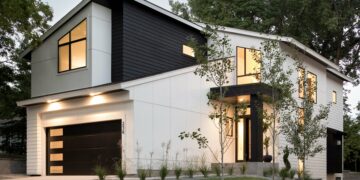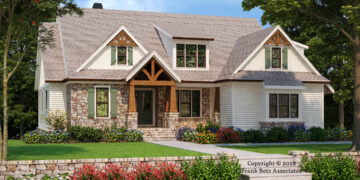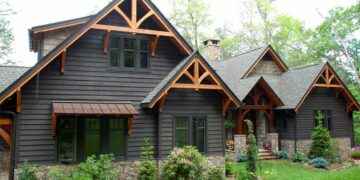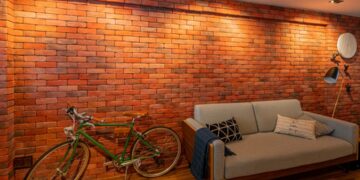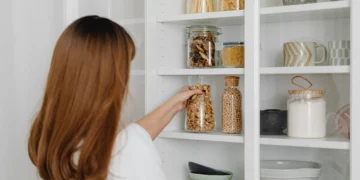When picking colors for your home, many people focus on how the color looks on the wall.
But there’s one more thing to consider: Light Reflectance Value (LRV).
LRV is a simple number that shows how much light a color reflects.
It’s important because it affects the brightness and feel of your space.
A high LRV means the color will reflect more light, making a room feel brighter.
A low LRV can make the room feel darker.
This guide will help you understand LRV and choose better colors for your home.
What is Light Reflectance Value?

Light Reflectance Value (LRV) tells us how much light a color reflects. It’s measured on a scale from 0 to 100:
- 0 means the color absorbs all light (like pure black).
- 100 means the color reflects all light (like pure white).
- Most colors fall somewhere in between.
Think of LRV like how mirrors work. Some colors act like strong mirrors, sending lots of light back into the room, while others absorb light, leaving the room darker.
How LRV Changes Your Home

The amount of light a color reflects can make your room feel different.
When you use colors with high LRV, like light blues or whites, they bounce light around the space, creating the illusion of a larger area.
This is especially helpful in small rooms or spaces with limited natural light, like basements.
Conversely, darker colors with lower LRV, such as deep greys or navy blues, absorb light and can make a room feel cozier and more intimate.
However, too many dark colors can cramp a room, so balance is key.
For example, if you’re painting a large living room, you might choose a mid-range LRV (40-60) to keep it open but still warm.
Higher LRV (60-80) colors in a small apartment or bedroom will make the space appear larger and brighter.
Temperature Management

Your choice of color can affect your home’s temperature, especially in areas with extreme weather.
In summer, light colors with higher LRV reflect sunlight and heat, keeping your home cooler.
This can reduce the need for air conditioning and lower energy costs.
For example, using light yellow or grey on the outside of your home can help keep the heat out in hot climates.
In winter, darker colors (lower LRV) absorb heat, helping warm your space.
If you live in a cold area, using darker shades, like deep browns or greens, can make your home feel cozier and reduce the need for extra heating.
Paint Life
According to the Paint Quality Institute, the LRV of paint can affect how long it lasts:
- Higher LRV colors, like white and lighter tones, are better for exterior walls because they reflect UV rays and help prevent the paint from fading.
- Lower LRV colors might need more upkeep, especially in sunny areas.
Picking the Right LRV for Your Rooms

Living Rooms
- South-facing: Try colors with an LRV of 40-60 for a good balance of light and warmth.
- North-facing: Choose a higher LRV (60-80) to brighten up the space, as it receives less natural light.
Kitchens
- Work areas: Use colors with an LRV of 60+ to help with visibility.
- Eating areas: LRV 35-65 provides comfort, creating a welcoming vibe.
Bathrooms
- Small spaces: Higher LRV (65+) helps with tasks and makes the space feel bigger.
- Larger spaces: LRV 40-60 works well and offers more options.
Outside Your Home
- Hot climates: Choose LRV 60+ to reflect heat and keep your home cooler.
- Cold areas: LRV 30-50 can help absorb warmth in colder weather.
Common Problems and Solutions

Problem: Colors look different than expected after painting.
Solution: Paint samples on your walls and check them at different times of the day to see how the light changes the color.
Problem: The room feels too bright.
Solution: Lower LRV colors or add window treatments to soften the light.
Problem: The space feels too dark.
Solution: Choose higher LRV colors or add extra lighting to brighten the space.
Helpful Tools
Finding the right LRV for your room can be easy with the right tools. Here are some ways you can make the process simpler:
- Color meters at paint stores: These devices help you measure the lightness or darkness of a color. You can use them in-store to check how a color might look in your space.
- Online LRV calculators: Some websites let you input a color code and calculate the LRV. These tools make it easy to find the perfect shade without leaving home.
- Paint chip collections with LRV numbers listed: Many paint brands provide sample chips with LRV values marked. This allows you to compare different colors and their light reflectance quickly.
Final Thoughts
Now that you understand LRV, you can better choose colors for your home.
Considering the light in your room and the temperature changes you want to manage, you can create a comfortable, energy-efficient space that looks great.
Remember to check paint labels for LRV numbers and ask your local paint store for help with measurements.
By using LRV to guide your decisions, you’ll make your home more stylish and livable.


